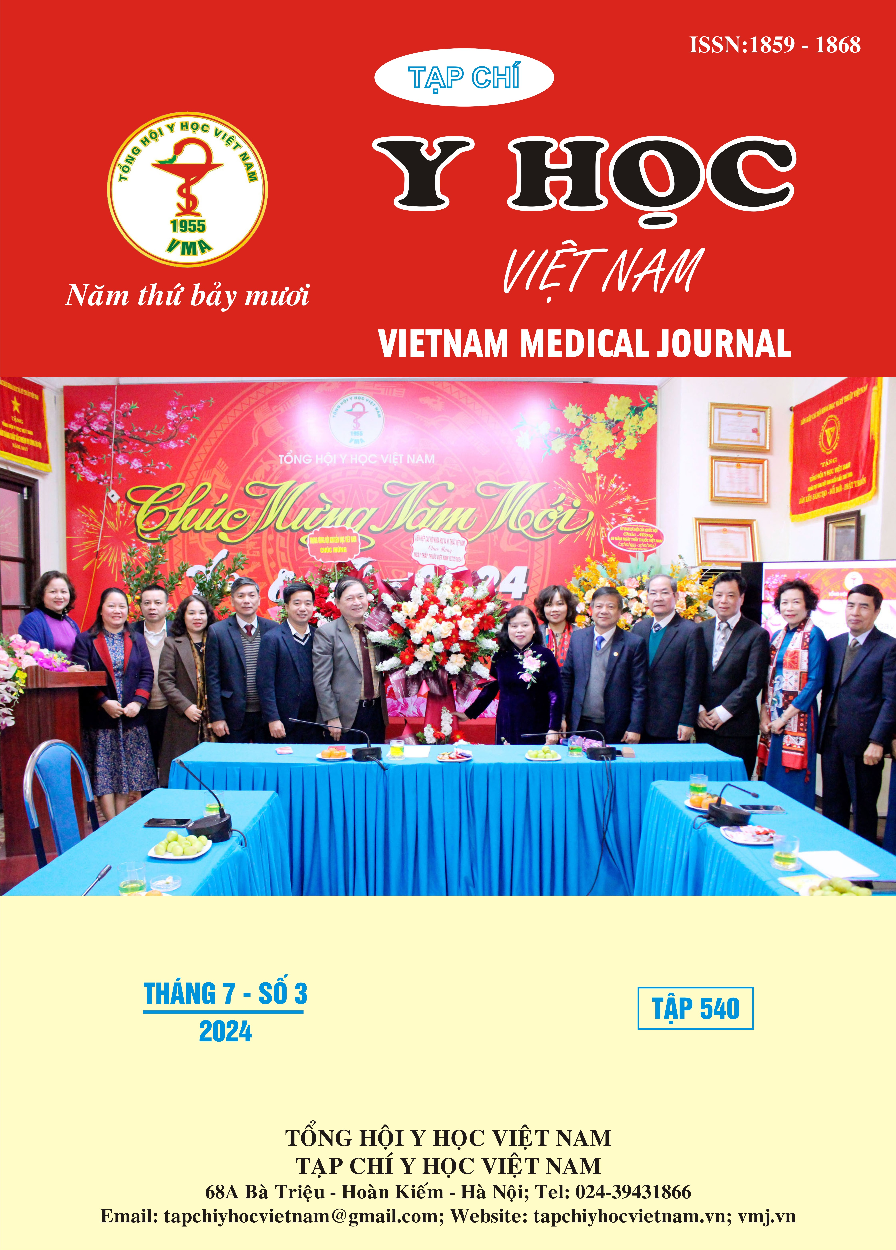CLINICAL CHARACTERISTICS, LABORATORY FINDINGS AND EFFICACY OF BRONCHOALVEOLAR LAVAGE WITH FLEXIBLE BRONCHOSCOPY IN PATIENTS WITH NON-RESOLVING COMMUNITY-ACQUIRED PNEUMONIA TO INITIAL ANTIBIOTICS
Main Article Content
Abstract
Background: Bronchoalveolar lavage is a relatively safe diagnostic procedure and plays a significant role in evaluating underlying causes in cases of pneumonia unresponsive to treatment. Objectives: To describe the clinical characteristics and laboratory findings and evaluate the effectiveness of bronchoalveolar lavage in patients with non-resolving community-acquired pneumonia to initial antibiotics. Materials and methods: A cross-sectional descriptive study was conducted on hospitalized subjects at the Respiratory Department of Can Tho Central General Hospital and at Can Tho Tuberculosis and Lung Hospital from April 2023 to January 2024. Results: A total of 46 patients participated and were followed up until the end of the study period. The mean age was 64.91 ± 15.67, with a male-to-female ratio of approximately 3:1. Over two-thirds of the patients had a history of smoking. Hypertension and diabetes mellitus were the two most common underlying diseases, with rates of 58.7% and 30.4%, respectively. The typical symptoms were cough (80.4%), sputum production (69.6%), and dyspnea (60.9%). The mean white blood cell count was 11.78 ± 5.21 x 109/L, with neutrophils predominating (70.71 ± 19.25%). Bilateral lung involvement was predominant in most cases (54.3%). Bronchoalveolar lavage fluid examination showed positive gram staining and bacterial culture in 41.3% and 43.5% of cases, respectively. 37.0% of patients required antibiotic adjustment based on antibiogram results. No significant differences were observed between males and females (p > 0.05). Overall, most patients (98%) had a favorable treatment outcome and were discharged in stable condition. Conclusion: Community-acquired pneumonia unresponsive to initial treatment presents with typical features of typical community-acquired pneumonia cases but often involves bilateral lung infiltration and relatively fewer fever symptoms. Although microbiological testing from bronchoalveolar lavage with flexible bronchoscopy may lack sensitivity, in cases yielding positive results, adjusting antibiotics based on antibiotic susceptibility testing from cultured bronchial washing fluid contributes to overall outcome improvement.
Article Details
Keywords
Non-resolving community-acquired pneumonia, antibiotics, bronchoalveolar lavage.
References
2. Davidson K.R., Ha D.M., Schwarz M.I., Chan E.D. Bronchoalveolar lavage as a diagnostic procedure: a review of known cellular and molecular findings in various lung diseases. J Thorac Dis. 2020; 12(9):4991-5019.
3. Duarte J.C., Cordeiro C.R., Ferreira A.J. Role of flexible bronchoscopy in non-resolving community-acquired pneumonia - A retrospective analysis. Rev Port Pneumol (2006). 2017; 23(3):168-169.
4. El-Shabrawy M., El-Sokkary R.H. Role of fiberoptic bronchoscopy and BAL in assessment of the patients with non-responding pneumonia. Egypt J Chest Dis Tuberc. 2016; 65(3):613-620.
5. Feinsilver S.H., Fein A.M., Niederman M.S., Schultz D.E., Faegenburg D.H. Utility of Fiberoptic Bronchoscopy in Nonresolving Pneumonia. Chest. 1990; 98(6):1322-1326.
6. Jayaprakash B., Varkey V., Anithakumari K. Etiology and clinical outcome of non-resolving pneumonia in a tertiary care centre. J Assoc Physicians India, 2012; 60:98-101.
7. Kim E.S., Kim E.C., Lee S.M., et al. Bacterial yield from quantitative cultures of bronchoalveolar lavage fluid in patients with pneumonia on antimicrobial therapy. Korean J Intern Med. 2012; 27(2):156-162.
8. Panse J., von Schwanewede K., Jost E., Dreher M., Müller T.. Pulmonary infections in patients with and without hematological malignancies: diagnostic yield and safety of flexible bronchoscopy-a retrospective analysis. J Thorac Dis. 2020; 12(9):4860-4867.


